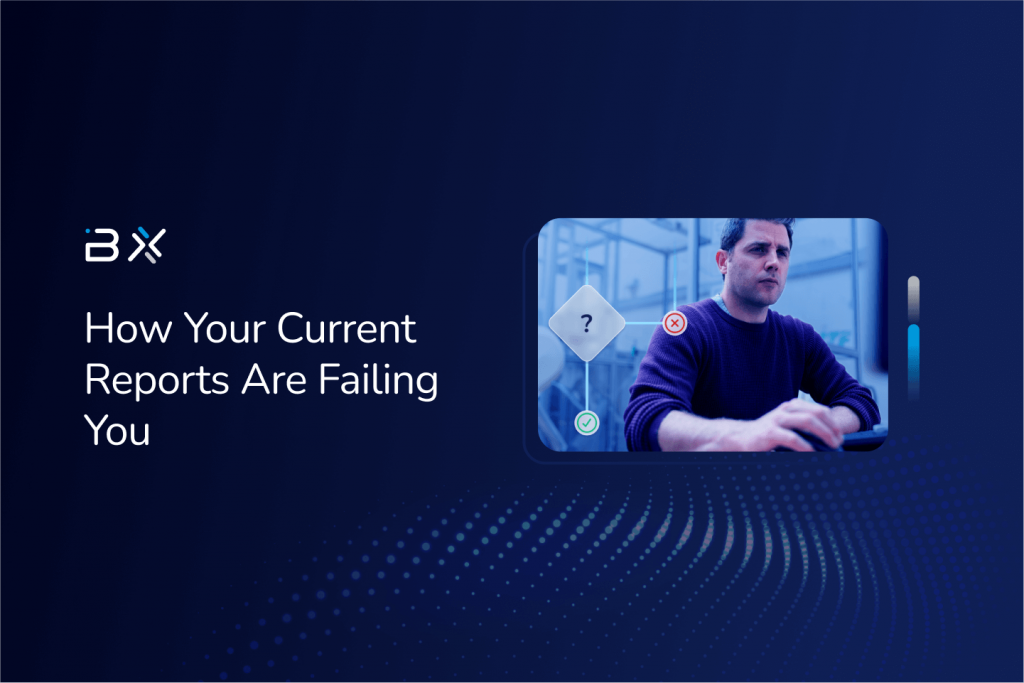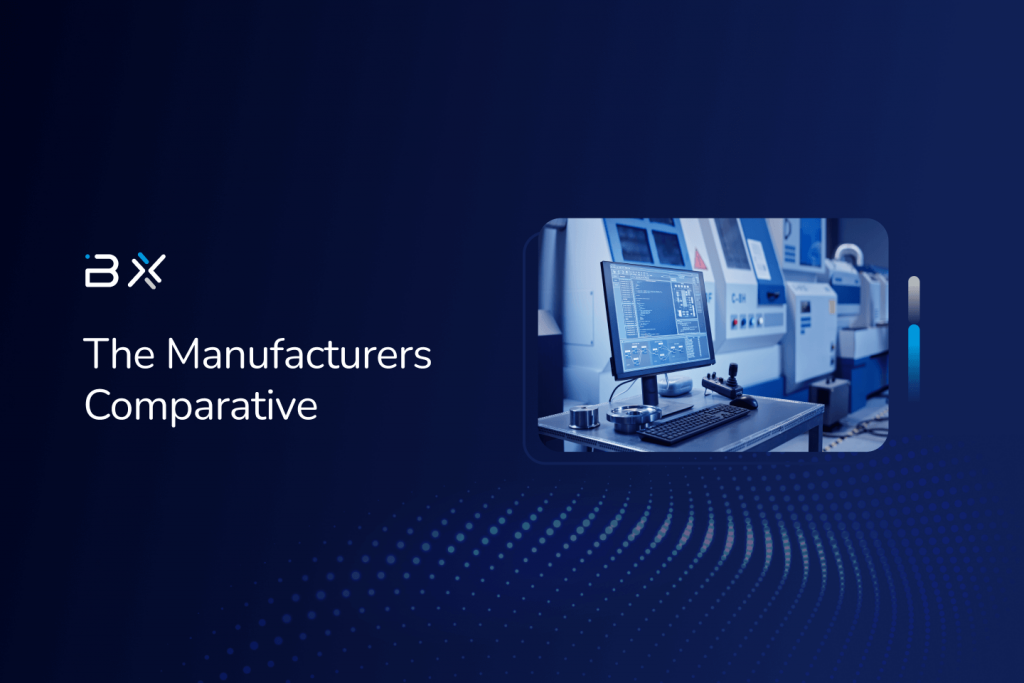The Essential Guide to Business Intelligence (BI) Reporting

Reporting is your roadmap, guiding you to the answers you need; business intelligence is the vehicle on the road itself right there with you; traveling through the ups, downs, and unexpected terrain, with clarity as to how you got there and where you’ll be going. Business intelligence – a foundational element that has transpired across organizations of all industries today. With BI reporting at your fingertips, you have your ultimate guide to all things business transformation. What is Business Intelligence? Business intelligence serves as the go-to mechanism for enterprise-wide information management, utilizing solutions, systems, and softwares to combine all relevant data into actionable insights. It is dynamic, automated, and fully customizable. Commonly used for full data visibility in executive meetings, business intelligence dashboards bring key action items to the forefront for top leaders looking to make data-driven decisions that impact revenue and performance. How Business Intelligence Reporting Works To break it down further, BI reporting can be summarized by the implementation of business intelligence that works to bring all necessary data sources within the organization through every critical stage for making informative decisions – from extraction, preparation and cleaning, to formatting, visualizations, and analyzing. BI reporting is built flexible to any and all technical skill levels so any employee role can feel empowered and on the same page as they carry out their responsibilities. That being said, business intelligence has many use cases based on the goal it needs to achieve and the people it needs to support. Now let’s cover some examples for how BI reporting can be seen in action. As you read, keep your own business processes in mind and see where opportunities may exist for different departments and leadership to BI Reporting Use Cases That being said, let’s dig deeper and cover some examples to show you the wide variety of use cases for BI reporting and how it can be seen in action. Dashboards: By using dynamic data visualizations, BI dashboards create a level of visibility and awareness to how your key data is correlating, through interactive and customizing capabilities. Static Reports and Alerts: Need to send a snapshot of top KPIs and performance in the now? Static reports and alerts increase collaboration and responsiveness; so when measurables are off, you don’t miss a beat. AI and Machine Learning: Where human error is inevitable, AI and machine learning step in to provide reliable analysis the human eye can’t always see or anticipate – through advanced analytics and predictive insights. Self-Service BI Reporting: Data-driven decision making without time spent coding – self-service reporting gives power to KPIs and data sources, allowing users to make reports come alive to assess relationships, historic data, and what-if scenarios. Embedded Business Intelligence: Your platforms. Your systems. Your time. Nothing gets impacted when you can implement BI into all existing applications. For external and internal knowledge transfer, embedded BI eliminates risks of clunky, non-seamless processes. Mobile Business Intelligence: No matter where you are, data insights and BI reporting tools will follow – no decision is ever delayed and everyone can stay in touch with each other and in tune with their data. BI Reporting Objectives When working effectively, BI reporting holds immense value for your organization and those who learn to leverage it. When integrated across the entire business, reporting becomes second nature because of the depth of intuitive knowledge it is able to bring to your data sources as they speak and correlate with one another. The primary goal of BI is to provide data insights to support decision making; and over time this becomes more achievable as teams are cross-trained and the learning curve flattens. Keep in mind that BI may not be for everyone on your team. While it is important to bring a level of awareness to those that aren’t fully utilizing the solution, evaluate who should be trained in which areas so as to prevent data responsibility from continuously being handed off to someone else. By expanding opportunities to run meetings, conduct webinars, and develop strategies beyond that of static reports, spreadsheets, and even handwritten notes, BI reporting makes data analysis more accurate, less timely, and enables decision-makers to be interactive with and edit their data in one place. It takes the manpower spent on managing softwares and applications for a day’s work and reallocates it so attention stays where it’s needed most but no data source gets left behind. It’s all about efficiency when it comes to business intelligence – how can you keep what is successful in your operations while also finding new ways to cut down on costs, test new strategies, and improve revenue-generating performance? Another main objective of BI reporting should be focused on business continuity and supporting long-term growth. Although more difficult and robust to measure compared to measuring the quality of data insights, this objective is critical for assessing a BI tool as it becomes prevalent across your business. Business intelligence should not only amend historical issues and focus on the present, but also help you adapt for the future so you can see longevity in your operations, programs, softwares, and processes. BI Reporting Benefits As BI reporting becomes fully integrated into the existing data architecture of a business, with it it brings a vast level of programmatic knowledge and value. It lessens the prevalence of partiality that comes when leaders and employees become deeply engrossed and in the weeds of their data because they are working with it day in and day out. BI reporting allows users to take that step back, to not miss the forest for the trees and actually make decisions that support the business as a whole, not just solve with a quick fix. Through objectivity and enterprise-wide security, BI reporting carries many benefits for businesses across all industries: Dynamic capability and customization increases reliability on having reports that are built off accurate, up-to-date data; as well as the ability to assess potential outcomes of changing variables. Mitigates time and resources once spent on
It’s Time to Rethink Data Analytics: How to Get from Analysis to Actionable Information

ERPs, Big Data, i4.0 (ie, connecting direct to machines), MRPs, MESs, spreadsheets and other data sources are running your various departments. All of these have advanced to hold greater capacities of data, however, few, if any, have advanced in connecting your data. Manufacturers have added processes, certifications and new capabilities but what hasn’t kept up is the ability to operate off of one source of truth– one place to go to get company-wide insights. Many of the above data sources have built in “dashboards” that you cannot customize nor tie in outside data, thereby forcing you to make decisions in a vacuum of what you are currently viewing. They are convoluted and disparate systems that each require unique knowledge from those on your team, only to run the risk that there is a lack of data access or quality. The fire at hand gets your attention and takes priority, thereby the database that relates to that fire will be utilized. There are alternatives, however; you CAN connect all of your data together to obtain insights in one location, it takes 5 steps: Identify all data sources – this is more difficult than it seems, you will need to consider spreadsheets, emails, even verbal conversations and handwritten notes, in conjunction with the more commonly thought of data sources such as your ERP, HRIS, MES, etc. Create a data lake to connect your data – this will essentially put your data in one spot, better preparing you for step #3. ETL – stands for Extract, Transform, Load. That means once your data lake is created, you can transform the data to prepare it for step #4. High level speaking, transforming your data can encompass cleaning, deduping and formatting your data. Visualize your data – create stunning dashboards to build one source of truth where you can access all of your insights in one location, whenever and wherever you need to. No more using only the data source connected to the most recent fire. Keep an eye on all of the important facets of your business that are a priority while attacking the current fire. Focus on 3 core tenants – color theory, bottom half reporting and exceptions. Color theory should be used to force your focus on the items worth focusing on, not showing a rainbow of colors that forces you to burn brain calories to figure out what they mean. It shifts your perspective in a way that makes decision-making more seamless and intuitive. Bottom half reporting and exceptions refer to reducing what you are looking at to, again, reduce the brain calories needed to make decisions. These 3 core tenants will help you create stunning and, more importantly, actionable dashboards. Gone are the days of dashboards that are not customizable, that merely use pie and bar charts, or show data in a tabular chart that is basically another spreadsheet within a dashboard software. Here are the days of having one source of truth that drives action and allows leaders to focus on exceptions, low hanging fruit AND profit generating opportunities–without constant energy repeatedly spent on what is seemingly the same issue. Like any great advancement, these 5 steps take a dedicated leader to drive the ship and a crew that’s ready to support where it’s needed most. It may seem like a new territory with many unknowns, however taking it step by step will unlock your data destiny. Think you have what it takes to transform your business?
How to Automate the Gemba Board Effectively

The workplace today has vastly evolved with the solutions, methods, and platformsthat now exist to better manage the challenges and inefficiencies impactingtheir day-to-day productivity. One of those tools, not as commonly known, but still highly effective is a GembaBoard. Gemba is Japanese for “the actual place.” When it comes to businesses,committees, or us as individuals trying to improve processes, we often askwhere the actual problem lies, and from there we craft our solution. The GembaBoard does just that – and we’re going to show you how. What is a Gemba Board? A Gemba Board is a visual management tool that works cohesively with your existing set of solutions and systems to monitor how productivity, communication, and the usual modus operandi process can shift to help improve, restructure, or bring greater stability within the organization. This form of transparent knowledge sharing pushes the business to find balance and behave as one functional ecosystem. The Importance of a Gemba Board In order to achieve the benefits of a Gemba Board and capitalize on what it offers, it’s critical to take a step back and understand the true importance of a Gemba Board. It’s not just another software to add to the pile, or a tool that gets implemented but then goes left unused; rather it is a way of thinking, a full mindset for the organization to embed into their daily work to better manage workflows and processes. It all starts by looking in “the actual place” as Gemba states – by doing what is known as a Gemba Walk. The Gemba Walk introduces leaders and managers to meet their business head-on in a way they may not always have the time or means to conduct this full analysis. Its main focus is to be an active learning and engagement experience where those managers inhale everything in front of them without taking a reactive or defensive position. The goal is to observe, obtain, and have open dialogue. Through their own eyes in this process, top leaders and executives gain that granular and essential perspective into the work that drives their bottom line, while making it a priority to let their teams feel seen AND heard. It provides an objective analysis rather than an assumptive one that can often take course when leaders want a solution but need somewhere or someone to hold accountability. How to Use a Gemba Board The value of a Gemba Board is not partial to just one industry or one style of workplace, although there are some workplaces that may benefit more from the use of a Gemba Board and its analysis. Where there is a need for direct transparency on the status of information that may have an impact on results performance, quality measures, or operational productivity, this is where a Gemba Board finds it fitting in creating real value. This may be a shop floor and a front-line team, a triage department and a team of nurses, in-service training and Human Resources, or a board committee and executive leaders. These all exemplify where a Gemba Board is most necessary – for clean, digestible data visibility for anyone involved, at any level. Everyone should play a part in its management to ensure measurables are accurate and only require a quick glance to be fully understood. What Should be Displayed on a Gemba Board? Your Gemba Board needs to work with you and your team, in how you process information, make decisions, and analyze solutions when multiple problems may be coinciding. The best way to answer the question of what should be displayed on boards, is to decide on the areas that cannot afford much error, play a significant role in influencing revenue, and require everyone’s attention, not just a select few. From there, a Gemba Board should leverage the benefits of color theory, visual perception tactics, and real-time information analysis that data visualization also utilizes. Take these into consideration as you decide the KPIs and measurables that demand this targeted attention. As for the specific columns and rows to include in your Gemba Board for tracking and keeping everyone accountable, here are some Gemba board examples of column title ideas: 5 Tips for Starting a Gemba Board Now that you know what’s valuable to include, it’s time to build your process and analysis. Looking to get started? Here at Bearex we have 5 tips that will get you going on your first Gemba Board layout. Tip #1 – Keep it Active Talk the talk, and walk the walk. Do not neglect your Gemba Board after the initial efforts that went into the evaluation, observation, and engagement process by those on your team. Considering the fact everyone will be looking at this on a daily basis so you need to ensure the data remains timely and accurate. This also means your Gemba Board too should receive an analysis from time to time, asking whether you should measure anything differently, share it in a new way, or create a new category altogether if deemed necessary. Tip #2 – Make it Engaging Since the whole point of a Gemba Board is to keep it up for constant awareness, you also want to keep in mind the risk of letting it go hidden because it becomes habitual. It is also a people management tool, not with the same individual improvement purpose of performance reviews, but it should inspire communication and drive accountability. When you analyze your measurables and processes, take time to assess your people too and how different departments may take turns sharing top insights or how varying levels within a team can use it to facilitate discussion. Tip #3 – Encourage Collaboration This tip is most valuable at the beginning setup stages of your Gemba Board, and can even be talked about during the Gemba Walk process. When employees and managers talk through pain points, daily action, and workflow status, make it known that everyone’s opinion can also go into the contents of the boards. Every role and
How Your Current Reports Are Failing You

Don’t let what’s critical to your business become stagnant. Reporting – we discuss it in meetings, it’s part of our daily review, and it may even provide knowledge externally to the public. It’s a necessity for any business, yet still, reporting often gets neglected when immediate needs of day-to-day productivity take priority. There’s no question it can be difficult for businesses to accurately prioritize when everything is deemed critical. And it’s true – every aspect of your business is critical for it to function as it should; and therefore, it’s not about figuring out what should be focused on, it’s about determining when it should be focused on. Serving as the backbone of your organization, there is never a time when manual or digital reporting should not be a central focus; however, foundational and solid reporting makes it all the more possible to uncover that when behind the critical matters of your business so that you can properly triage and give attention where it’s most important. Even so, saying you have reporting in place or implementing reporting into your team’s morning routine does not guarantee you’re getting the most out of your day or solving those prioritized issues as effectively as you can be As daunting as it can be, all businesses should take a step back from time to time and assess with a keen eye the ways in which their reporting is clearly supporting their successes, as well as the ways in which it may be hindering or completely working against them. To give you a head start, our team at Bearex pulled together 5 main ways your current reports may in fact be failing you, and it all comes down to Who, What, Where, When, and Why. 1. WHO: Decisions are not meeting their full potential A quick, but effective assessment to check if your existing reporting system is misleading your team is to first simply ask – is this going to the right people? Later, we will talk about the right timing and the right data sources, but those making decisions off the reports themselves is a pivotal place to start. If certain leaders and decision-makers are not given proper access to the reporting that is imperative to their job and the success of the team or greater operational performance, then critical data is essentially being left unattended and slowly becoming a wasted resource. Do you have the proper architecture set up to bring accessibility to the forefront – to organize reports and data sources in a way that mirrors your internal structure? Full accessibility to everyone is not helpful either as it can overwhelm and cloud judgment for those that don’t need to see everything; therefore it takes careful understanding of the functions certain roles on your team have where reporting can be sanctioned strategically. 2. WHAT: You don’t know what you don’t know – only getting part of the story One prevalent way your reports may be failing you but can often fly under the radar is the sole fact you are not connecting to all data possible and relevant to your team. Historical shifts in change management and leadership may lead to this natural oversight, causing time to go by without realizing there are informational gaps. This could be from missteps in data management, new system integrations, natural disconnects or convoluted data access, or a myriad of other reasons. Just because nothing has changed doesn’t mean there shouldn’t be routine status check-ups, and even if change has happened, that doesn’t mean there shouldn’t be maintained a set of checks and balances. This may be giving your business an incomplete and therefore, false perspective into current performance levels. Half the story is almost just as misleading as having no story at all, because decisions that should have otherwise been made could in turn be hurting you. 3. WHERE: Lack of integrity When busy days turn into tireless weeks, problem-solution mindsets to fixing issues may quickly become the norm. While this isn’t a fault to your business short-term, it can hinder your long-term growth if no time is ever allotted for insights of the issues themselves. So often these are related to problems that fall under the greater umbrella of data integrity as a whole.. Data integrity, as defined in this HBS article, is the accuracy, completeness, and quality of data as it’s maintained over time and across formats. Maintaining and protecting the integrity of your company’s data is an introspective process that requires understanding where the concerns arise from in the first place, not just their quick fix. Over the course of time, these problems can snowball when not addressed immediately, leading to greater confusion when trying to unravel at the source that may not be easily spotted. Whether it be a threat to your data security or perhaps a missing set of data translated across departments or documents, it’s important to work towards knowing where your data is missing the mark, or where opportunities exist to strengthen your data integrity. 4. WHEN: The data is not reflective of now To follow this train of thought, you may in fact have all the data you need and available to you, but it also begs the question of when? Are there automations at play that are empowering the data sources you connect to every day to be consistently up-to-date, or if necessary, in real-time? Static data, even if whole and complete, is still limiting your reporting from meeting its full capabilities. This is not to say past data is not still valuable to reporting, it is necessary for building awareness for preventive or proactive measures of decisions for the future; but no business should only be looking backwards. If you can take advantage of updated information through data automation, you can use today’s data the moment it’s being captured, and perhaps open the door to more complex measures for effective decision-making, such as predictive analytics. 5. WHY: Reliable, but not representative Data is not
What it Takes to Build Accountability with Data Visibility

It’s time for your data to provide more value. “Measurement is the first step that leads to control and eventually to improvement. If you can’t measure something, you can’t understand it. If you can’t understand it, you can’t control it. If you can’t control it, you can’t improve it.” H. James Harrington As we discussed in our latest blog post on how businesses can use data to improve performance reviews, it becomes incredibly more difficult to uncover an area for improvement when the core of it is unmeasurable. Whether we are consciously aware of it or not, employees rely on this sense of measurement and control to know what direction they are to go in; and some rely even more heavily on it to develop the motivation required to go in that direction in the first place. At times, there are tasks or roles that are simply not fit for someone; whether they are outside their realm of experience, beyond their current bandwidth, or dealt to them without adequate resources. While individual reviews work to help identify whether certain behavioral and performance results are tied to these skill level abilities vs purely motivational levels, a measure of group performance works to help the team as a whole regardless of these factors. When team members can see where they stand on broad performance measurables amongst their peers, it’s not always a means for competition or comparison, but more of a tactic to fill the gaps with enhanced performance when all it may take is greater motivation from a select few. The Answer is in the Data Performance output levels will never be the same across the board, it’s inevitable that every organization has those that are considered top performers, and those that aren’t always delivering to their expected return. Before immediately trying to direct solution-focused actions to what seems like the core of the issue – those who are performing at lower levels – you first need context. A contextual understanding brings forward the collective knowledge of all the elements that comprise the bigger picture; in this case we find those elements to be each individual performance review coming together as one cohesive team review. This allows for a peripheral vision into just how much of a differentiation exists across the areas that are driving day-to-day operations, and to what extent they stray from industry standard. Full data visibility makes this contextual analysis a quick top-of-mind action leaders can start every day with. It provides a cross-sectional look at that single point in time: Whereas performance reviews provide a longitudinal comparison over time for that unique individual, an overarching performance dashboard for your team adds that critical layer for creating results that will strengthen your bottom line. Increasing Accountability There are 3 main considerations to have when using this contextual data to better manage performance issues that are hindering your team, and as a result, your culture. Consider the best way to address these as they fit to your current processes and where the crux of change is most achievable. Bring Attention to Poor Performance Taking second place doesn’t fuel a fire to win first nearly as much as it ever will for someone trying to completely avoid last place. At Bearex, we have been quick to take note of this as we work with clients through the initial stages of system inventory and data connectivity. It’s not uncommon to assume that as humans, we are motivated to become the top performer in an area we are being measured or evaluated in, especially when there is full awareness of peer-to-peer comparison, not just measurements of our own self-progression. That being said, businesses often capitalize on this assumption by showcasing top performers in a ‘leaderboard’ fashion with the intent to increase motivation for those sitting below. Consider this instead: Doing so creates opportunities to: Focus on Attainable Goals A distant moving target is much more difficult to aim at than a nearby steady one. Who said goals had to be grandiose and industry-shaking? The key is to focus on attainability – which stems from accessibility – which in turn stems from that level of complete awareness of where everyone stands, both low and top performers. The more you can have complete access and control (control in the knowledge attainment sense) over the data operating in the background of your business, the better you can be at breaking down bite-sized goals. By this, we mean goals that take into consideration how they can accompany the different ways people on your team conduct their work, their current performance standings, and their unique strengths and areas for improvement. Provide Complete and Full Transparency Whether it takes reframing the data, leveraging actionable and achievable goals, or taking steps back to properly clean and restructure your data strategy, it’s about letting the measureables speak for themselves when all is said and done. Although presenting statistics directly tied to specific employees is seemingly blatant and overt, mitigating the errors that come with incomplete reporting or verbal/handwritten statuses also influences: If you’re ready to take control of your data and motivate those who are pivotal to your operations, all while staying focused on the current matters of your business, we at Bearex are ready to support you. Contact Us
The Manufacturers Comparative

Staying nimble in today’s competitive and challenging industry If you are a manufacturer in today’s competitive market, simply knowing how your company compares to other manufacturers likely won’t take you to the next level. It tells you where you’re coming up strong, meeting industry standards, or experiencing a shortfall; but it doesn’t exemplify what to do with that information or how to change course. Essentially, it’s a show and tell, but with just the tell. You’re only getting half the story, and as a result you may be making decisions off of assumption or best practice that may otherwise not be fit for your business at the time, or have become outdated practices anyways. You need real, actionable insights that provide a holistic view of all current and historical standings for everyone operating in your industry. It’s about pushing your business forward by opening up new opportunities for a more profitable operational system, without completely reinventing the wheel. Realistically speaking, how can you make that happen? Over here at Bearex, we’re all about greater efficiency and complete business optimization. We’re not about reinventing the wheel either, but rather how can the driver stay in the fast lane without putting the wheels at risk. That’s where the Bearex Insights Hub & Manufacturers Comparative comes into play. Custom fit to your organization, the Insights Hub connects and inputs all your important data, creating a one stop shop for data entry, analysis, and actionable steps to improve day-to-day operations. Layer that with a user-friendly interface that tracks current and historical results from your peers in the industry, the manufacturers comparative provides real up-to-date insights on multiple segments, from operational to financial to HR data. Small Data Wins Add Up to Greater Success The Manufacturers Comparative was created to fill the missing link between mediocre surveys and peer-to-peer questions across those in the industry. As we said before, knowing how your company compares to other manufacturers likely won’t save it or take it to the next level since you have already hit the home runs for your company. What the insight will do, however, is provide you ideas on where to look based upon the most profitable manufacturers as well as how you compare to others in your industry, in general. Together, this works to help you pinpoint the singles and doubles that are still out there, ensuring you still remain a valuable player in the game. The Manufacturers Comparative tracks 4 main areas: operational, financial, HR, and another that includes changing questions (example re: COVID-impacted changes). Let’s break it down: The Manufacturers Comparative has something for everyone and is not limited to the standard metrics that define the industry. If you have what you consider to be a unique company compared to others, you can still weigh and differentiate key areas such as: vacation policies, health benefits, shift premium, headcount information and more. Consider it your virtual think tank that is continuously updating to keep not only keep your business agile, but the entire industry knowledgeable as a result. Be Part of the Evolving Manufacturing Industry As your company adapts, so will the Manufacturers Comparative. Annually, our team will take in feedback from our users as a way to analyze our solution and strategically modify to meet the needs of everyone and create room for the types of insights users want to see. Each sector and sub-industry in the ever-evolving manufacturing industry fits a different mold when it comes to the action steps and types of solutions that will fit their needs best. Due to the fact there are unique economic demands and organizational structure – or as McKinsey calls it, activity types – that define each one separately, the Manufacturers Comparative will also work to help you keep those differentiators in mind so as to not overwhelm you by extraneous comparisons. Our team at Bearex looks forward to what’s next – for your business and the manufacturing industry as a whole. We understand the challenges that are starkly impacting supply chain productivity, labor shortages, and altogether rising costs as we continue through 2022. There is not one simple solution, but a necessity to remain adaptive and stay ahead of the learning curve when it comes to automation and preparation for long-term business continuity. We encourage you to be part of the conversation with us. Stay tuned for more to come on the Bearex Manufacturers Comparative. Contact Us
Using Data to Improve Performance Reviews

Employee performance & engagement is crucial to every business, and data accessibility can help. Ask yourself: How do you evaluate progress and productivity? Assess skills? Overarching, how do you measure success? All of these are ambiguous terms but each of value when it comes to reviewing what we know as performance. Now throw in the fact the variable being measured is not the performance of something but rather the performance of someone. This makes things even more ambiguous and subject to challenges, right? That’s just it – performance reviews can often be seen as challenging to any kind of professional across any business. So what does it come down to? As business professionals, we are expected to measure qualitative information about those we work with when we ourselves, are qualitative beings. We run on intangible and other qualitative thoughts that drive the behaviors and skill-sets we are being measured on in our roles. While there are role-specific quantitative measures of performance, it is these ambiguous and inexact components that are still necessary and universal to performance reviews across the board. Getting from Point A to Point B Effectively evaluating someone in their performance across all these areas in a quantitative way is easier said than done. Without a standardized method or process, it can be difficult to know where to begin or have any rule of thumb as it pertains to a comparative scale for which to base your assessment off of. Even if it’s a qualitative portion of the annual review your entire team has consistently been doing, it becomes a bit more convoluted for one to accurately and surely denote a true change has occurred (whether progression or area for improvement) when there is no numerical evidence. While empirical evidence exists, this can be a cause for disorganization and inconsistencies, maybe not always at the year-over-year individual level, but at the cross-sectional level of how one manager evaluates their direct reports over another manager. So what does this mean? Where do you go from here? Our 3-part answer is simple, and the process to get there doesn’t have to be complicated either: In this blog, we want to provide additional insight for Human Resources departments on various ways to implement data into performance reviews, and how it can easily become a process deployed across the entire organization. Let’s break down those 3 ways you can get started today: 1. Extract & Intake Your Data For anyone conducting a performance review, it’s likely you are already taking a step back to gain a full understanding of all that you’re evaluating. Even if simply done via observations and quick notes, this intake is allowing you to gain a full picture into the behavior patterns and skill sets that your colleagues are displaying over the course of time, not just in the present moment. While more informal, there is something to take away from this process. It mirrors exactly what organizations can and should allow the data available to them to produce – a full intake and wide lens gauge of their information. Take a step further, and organizations can use that data and information to drive a more thorough performance review-business wide. The key to ensuring this succeeds? Access. You don’t know what you don’t know. And when it comes to data, you may think you have the full picture when in fact you really are just looking through a smaller lens; so it appears nothing is missing, but much more lies outside the existing boundaries that would help provide context. That’s where data extraction becomes pivotal. At Bearex, we refer to the start of this process as ‘taking inventory’ – looking at the expansive network that is your most utilized reports, tools, databases, and meetings – to better understand the workflows in place and where gaps may result. In doing so, every necessary piece of data can be pulled from its source and become an interconnected web with one another for automated entry, analysis, and further action. Here are elements to consider in your inventory as it relates to extracting data that will improve performance reviews: 2. Structure Means Standardization Which Leads to Success Not only is analyzing existing data a helpful way to get more out of your performance reviews, but so is the method in which you conduct the appraisal itself. It’s likely we have all heard of KPIs before – Key Performance Indicators. And that’s exactly what they are. Key. Indicators. Of Performance. They don’t just have to be utilized when measuring operational efficiency or YOY budget, they can also effectively be applied for those who make the business run smoothly – the employees. As Performance Measure Specialist, Stacey Barr states, “Qualitative variables aren’t performance measures. But they are used to help us analyze our measures.” Whether you have a more qualitative and standardized method for performance reviews in place (e.g. graphic rating scales, checklists, goal tracking, etc.), or instead a more fluid and conversational approach (e.g. self-evaluations, competency assessment, etc.) it is critical to assess how effective that method currently is, or could be, at achieving the end goal of a balanced review that promotes further development. What works at one business may not work at the next, so be wise when comparing across those in your segment or industry, and remember that consistency across others in the business and consistency across time remains necessary. This ensures objectivity and accountability for everyone involved. The best way to ensure your method is objective and becomes standard for all teams, whether more quantitative or qualitative, is to ensure all information is accessible. 3. Allow Everyone to Learn with Full Accessibility To evaluate two colleagues without the same information available is to compare apples to oranges. And to translate one review as a determining insight for the rest of the team is to say you’ve only ever tried Gala apples. No two people are alike, this will never change. That’s why accessibility, consistency, and integrity are so
We are Bearex

Business impact that goes beyond the data – from access to insight, measurable change starts here. Data Driven Business Management At Bearex, who we are explains what we do, and what we do defines who we are. No solution can be found and no problem can be uncovered unless we know your business on a personal level and what you use to define success. In order for our team to know yours, it’s important you also know what makes Bearex, Bearex. We strive to show businesses the potential they have to make great decisions and spot the exceptions when their data can be harnessed to become more accurate, accessible, and applicable. To break it down: Who we are: A team of data analysts, business management professionals, and technical solutions architects who work to develop a system-wide solution that harnesses data to drive your team’s actions. What we do: We empower business leaders to quickly discover insights hidden within your company’s data so every decision is a sound one. How we do it: With ongoing support and strategic recommendations, we handle everything from setup, to data connection, and full dashboard development. We deliver on the understanding that the process to finding a solution isn’t always linear, nor absolute. That’s where two important values remain the foundation of our services – organizational unity and business continuity. More simply put, operating on the now and focusing on the future. Every strategic business decision must be made with both in mind – ensuring there is cohesiveness across the status of current issues, top initiatives, and systems operating now; and supporting the goals in place for further growth, agility and mission-wide success. With this mindset we also offer professional EOS implementation, with a certified EOS Implementer, in order for you to take your business to the next level. The Bearex Difference All this considered, you may still be asking, what makes Bearex different? Why not look elsewhere or develop internally? When it comes to the way we work, our goal is to make a day-to-day impact on your business in a way that causes minimal to no interruption to your everyday processes, technology and people. We’re not here to implement a solution and change every aspect of how you operate only to leave you wondering how to sustain it with your existing resources. We will implement a solution that allows you to continue business as usual but makes more effective and efficient use out of those processes, technology, and people that run it; all while remaining conscious of your bottom line. Consider us your part-time data and business analyst, saving you from the budget risks and resource constraints that also come with implementing data analytics internally. Once you’re up and running, the Bearex team will continue to support you with these three priorities in mind. We want to be your guide in: Bearex operates as your complete data insights team, creating an Insights Hub for your organization’s reporting, analytics, and data entry. The Insights Hub will drive your team’s day to day activities providing one place all systems merge and highlight the most important outliers that are causing inefficiencies. Bearex replaces the hassle of excessive resource allocation and expense that would otherwise go towards purchasing a dashboarding tool and hiring both a business analyst and custom app developer. To learn more about our full process in detail, check out Our Process here. Where We Came From As Tom Jurasek, our CEO & Visionary, would say, “Bearex was born out of passion for the importance of connecting – connecting data, connecting employees and connecting great leaders to great results.” We take pride in our business passion, which is why we look forward to restoring the passion that lies in those who continuously work hard at yours. That’s why you’ll often hear us say it’s about making sure you can start working on your business, not just in it. Bearex got it’s pillars when a CPA (CEO Tom Jurasek), Dashboard Developer (CTO Stephen Shaffer), and EOS Implementer (COO Andrew Gissal) came together with this shared passion and a first-hand understanding on the importance of accessible information to make better business decisions and drive change forward. Thomas B Jurasek Tom – the CEO & Visionary at Bearex, empowering data insights. With a background in CPA and CFO for-hire, Tom strives to simplify and help organizations have the information needed to make an informed decision. Andrew J Gissal As COO & EOS Implementer at Bearex, Andrew aims to help entrepreneurial businesses use data to gain traction through his experience in organizational leadership and startup sales & marketing. Stephen E Shaffer Steve is the CTO & Head of Dev Ops at Bearex, empowering data insights. Everything from data manipulation, to dashboard design and development, Steve is the go to for helping businesses solve problems by representing data in a usable way. Tom met Andrew & Stephen when he began building a secondary solution for clients of his CPA firm. Dashboards that connected to their systems started giving leaders a look into the most important information, displayed on charts and graphs rather than spreadsheets. As the solution developed it was evident that there was a high demand, and Bearex was founded as its own entity. As clients utilized the Bearex Dashboards, a need grew: the ability to capture data that was locked in disparate spreadsheets, note pads, sticky notes, etc. The Bearex Insights Hub was born to incorporate every crucial data entry in order to combine with other systems to tell a complete story. With all the information, a framework to utilize the data to create a culture of accountability and gain traction became clear. Adding EOS (Entrepreneurial Operating System) to the solution would play a pivotal role in not only making the data now accessible, but showcase how to use it in day to day operations. It allows for a seamless cohesion between your systems and the Bearex solution that provides the innate shared knowledge that comes with an
Hello world!

Elements Welcome to WordPress. This is your first post. Edit or delete it, then start writing! This page demonstrates some basic elements and typography which you will use frequently within your site. Make the text bold or make it italic. Why not bold and italic both at a time. Headings Following is the demonstration of headings depth of h1 – h6 most of the time bloggers uses heading level two to heading level four within the article. This is heading level one This is heading level two This is heading level three This is heading level four This is heading level five This is heading level six Paragraph of dummy text Lorem Ipsum is simply dummy text of the printing and typesetting industry. Lorem Ipsum has been the industry’s standard dummy text ever since the 1500s, when an unknown printer took a galley of type and scrambled it to make a type specimen book. It has survived not only five centuries, but also the leap into electronic typesetting, remaining essentially unchanged. It was popularised in the 1960s with the release of Letraset sheets containing Lorem Ipsum passages, and more recently with desktop publishing software like Aldus PageMaker including versions of Lorem Ipsum. Unordered list Nam purus magna, commodo quis accumsan sed, volutpat id velit. Fusce iaculis elit ut elit dictum, sit amet pharetra odio pulvinar. Nunc a sapien urna. Nam quis tempor justo, ac dapibus lorem. Ut mattis at purus in efficitur. Maecenas vehicula, est vel laoreet. Condimentum, elit mauris gravida sapien, id finibus dui est vitae nunc. Nulla odio dui, iaculis quis turpis in, vehicula consectetur sapien. Donec faucibus ligula nec sagittis porta. Ordered list Sed lorem mi, ullamcorper sed elit mollis, tempus sodales augue. Praesent enim justo, luctus sed felis in, ultricies tempus enim. Quisque vel justo vitae sem dapibus imperdiet. Cras nibh elit, pharetra at facilisis molestie, lobortis eu felis. Ut pulvinar ullamcorper nibh non pellentesque. Etiam ut gravida urna. Praesent ac urna posuere, lacinia enim ut, cursus est. Ut suscipit venenatis rutrum. In convallis urna et lacus lobortis lobortis. Quote Do you know you can type a greater than symbol and space at the beginnign of any text to make it a quote in Ghost Koenig Editor similar as markdown. We still do not know one thousandth of one percent of what nature has revealed to us. Albert Einstein Images